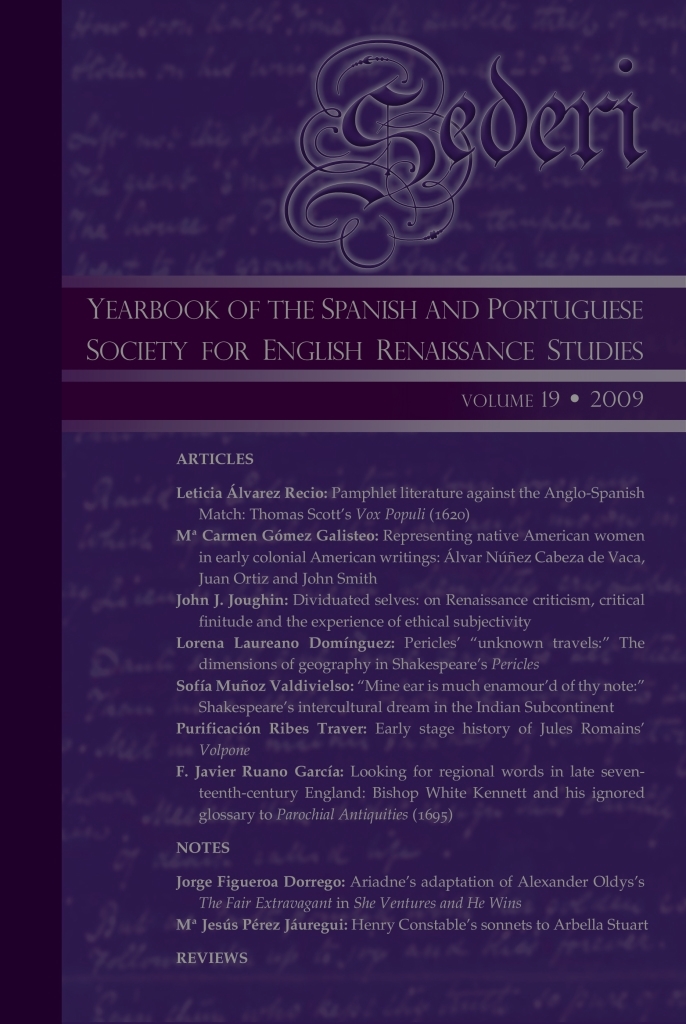“Mine ear is much enamour’d of thy note:” Shakespeare’s intercultural dream in the Indian subcontinent
Keywords:
A Midsummer Night's Dream, intercultural theatre, performance studies, foreign ShakespeareAbstract
Tim Supple’s 2006 production of A Midsummer Night’s Dream has been hailed by some critics as the successor of Peter Brook’s revolutionary 1970 version, a vision that changed perceptions of the play and became a classic in the history of its performance. Supple’s Midsummer uses about half of Shakespeare’s English text, with the rest translated into Hindi, Bengali, Marathi, Malayalam, Tamil, Sanskrit and Sinhala. It maintains the plot and characters intact, although it includes elements of local theatrical traditions in music, dance, martial arts and acrobatics. The production defies attempts at classification, since it presents features of “foreign” Shakespeare plays yet it braids the Indian-language dialogues into Shakespeare’s original English and extends the alienation effect of a foreign language production to audiences throughout the world. The international success of this production since it premiered in Britain as part of the 2006-2007 Royal Shakespeare Company’s Complete Works Festival at Stratford is meaningful beyond considerations of aesthetic and theatrical value. The present paper discusses Tim Supple’s A Midsummer Night’s Dream within the contexts of foreign Shakespearean performance...
Downloads
Downloads
Published
Issue
Section
License
The copyright holder of the published contributions is SEDERI.The hardcopy and an open-access version of the journal will be published simultaneously. The issues will be available online in the SEDERI website (http://www.sederi.org/yearbook/) and other repositories that have signed an agreement with SEDERI.
The authors who publish with this journal agree to the following terms:
a) SEDERI retains copyright of the essay.
b) If the author wishes to republish or rewrite the essay for another journal, or include the essay published in SEDERI in their personal repositories, or in any other way, they should contact the editors to obtain permission to do so. This will entail citing SEDERI as the original source and sending the editors a copy of the new version, or the link to the website, in case of online publishing.
The author(s) hereby warrant(s) that:
a) The essay submitted for publication is an original creation and does not infringe any copyright or property right of another journal, author or publisher.
b) The essay submitted for publication has not been previously published, whole or in part, and is not being considered for publication elsewhere.
c) Written permission has been obtained for any material from other sources included in the essay submitted for publication.




